
「下一代建筑」系列论坛之——建筑的数据生态
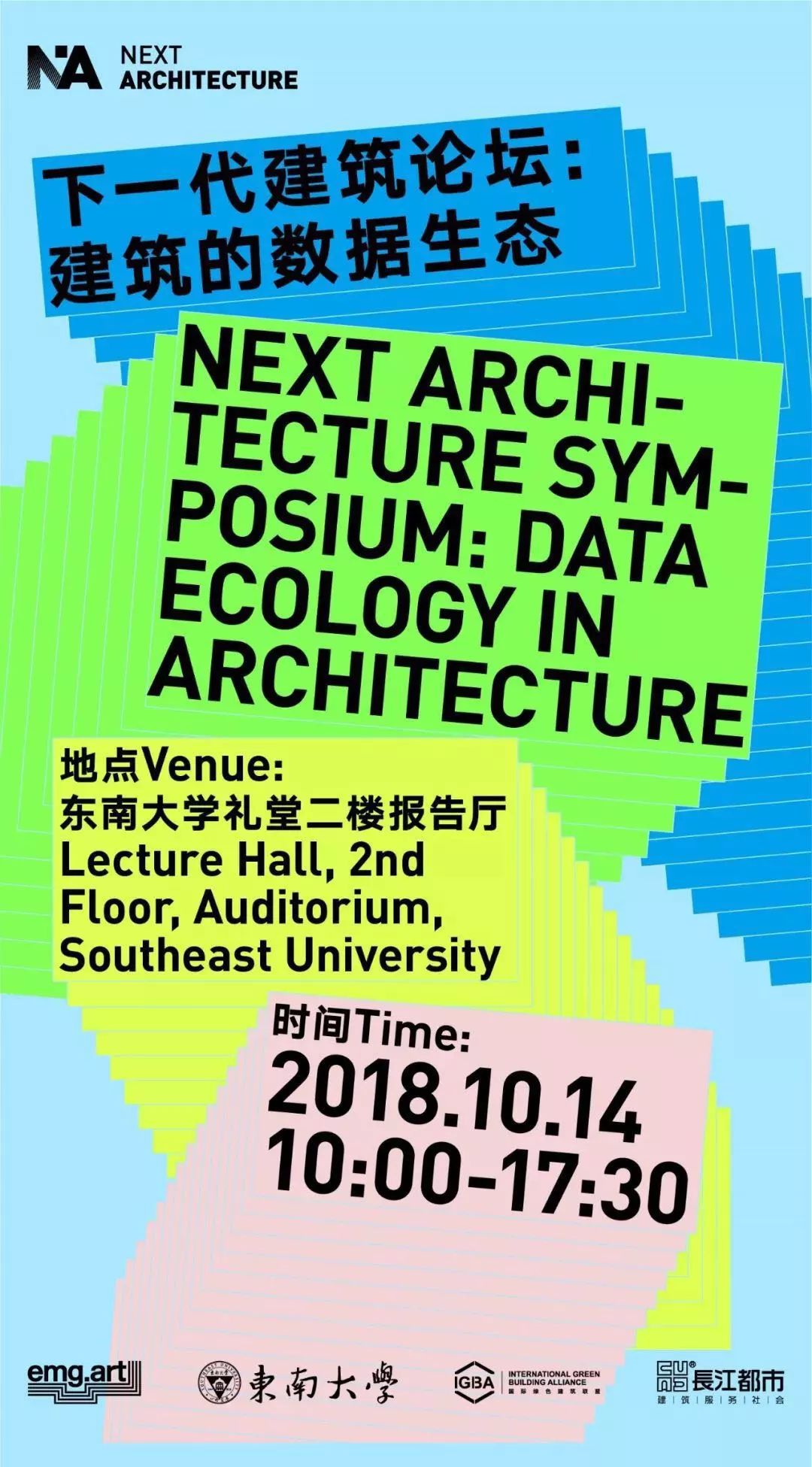
当建筑既是数据的入口,又是数据沉淀和分享的平台;当数据在人、建筑和应用之间循环累进……建筑学是否会被诠释成为一种数据生态?当房屋具备了“生命体”机制,自身不断学习和持续进化,我们是否做好准备要接受它的思考、行动和感情?
When building a house is no longer a masonry, but data; when building is both an entry point for data and a platform for data storage and sharing; when data is cyclical between people, buildings, and applications... architecture will be interpreted as a data ecosystem? When a house has a 'living body' mechanism, and it continues to learn and evolve continuously, are we ready to accept its thoughts, actions, and feelings?

(论坛现场:东南大学张彤教授主持开场)
带着不限于以上的种种设问,10月14日于雅伦格文化艺术基金会、东南大学、国际绿色建筑联盟及南京长江都市建筑设计有限公司联合主办“「下一代建筑」论坛:建筑的数据生态(Next Architecture Symposium:Data Ecology in Architecture)”,国内外引领“下一代建筑”的全球前沿建筑大师汇聚于此,分享各自的思考、探求和实践,在疑惑和兴奋中共同展望一种迈向数据生态的建筑学。这次论坛亦是继“智慧树:垂直社区的未来生活”国际竞赛终评后的一次经验交流与观念接力。
With a variety of questions not limited to the above ones, on October 14th, EMGdotART Foundation, Southeast University, International Green Building Alliance and Nanjing Yangtze River Urban Architectural Design CO.,LTD jointly organized the “The Next Architecture Symposium: Data Ecology in Architecture”. World leading architects who could representative the trend of “The Next Architecture' domestically and internationally gather here to share their thoughts, explorations and practices, and jointly look forward to The Next Architecture that is moving towards a data ecology with doubt and excitement.This symposium is also an experience exchange and conceptual relay following the final review of the “Smart Tree: The Future of the Vertical Community” international competition.
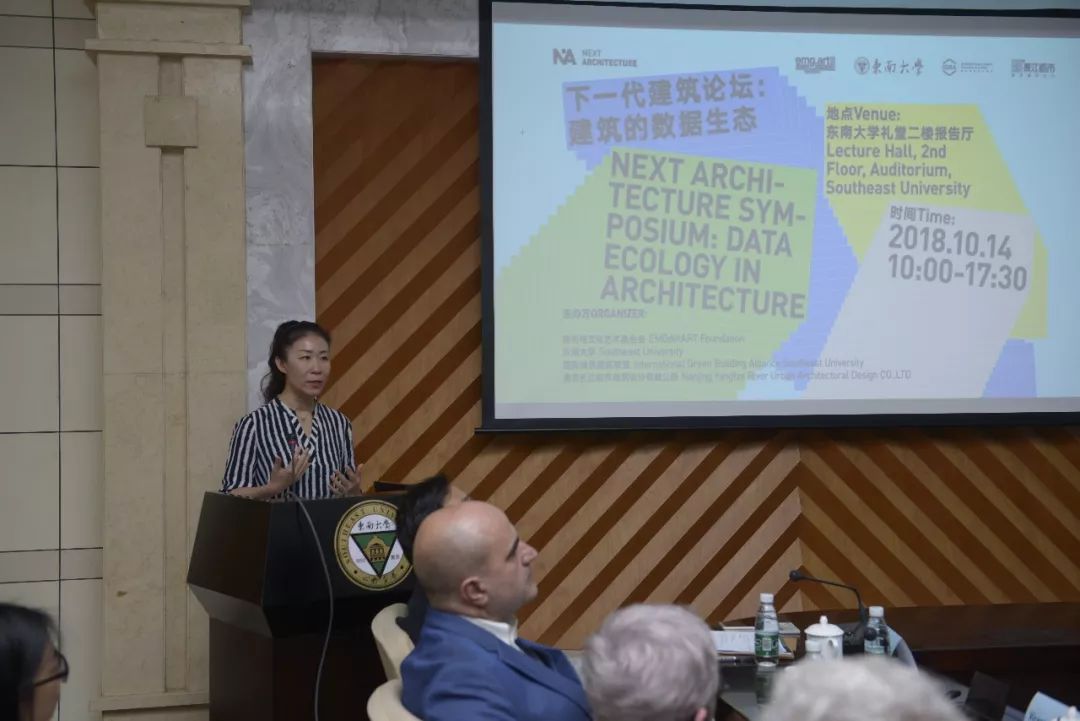
(论坛现场:雅伦格文化艺术基金会姚京女士开场致辞)
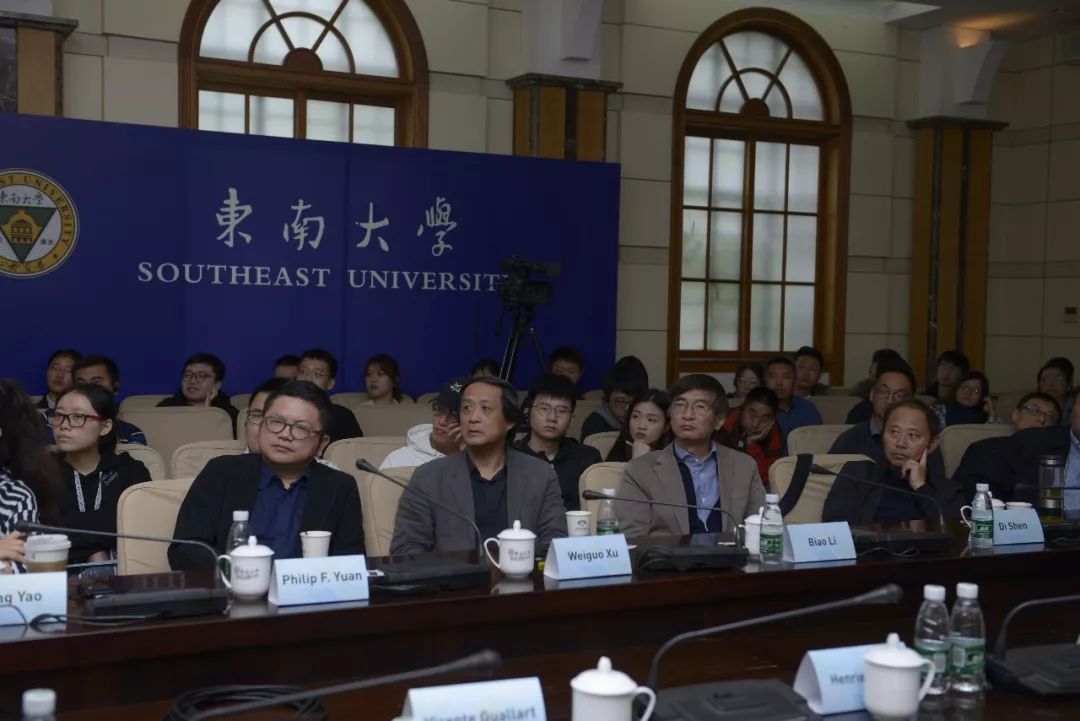
(论坛现场:(左起)同济大学袁烽教授、
清华大学徐卫国教授、
东南大学李飚教授、
全国工程勘察设计大师沈迪)
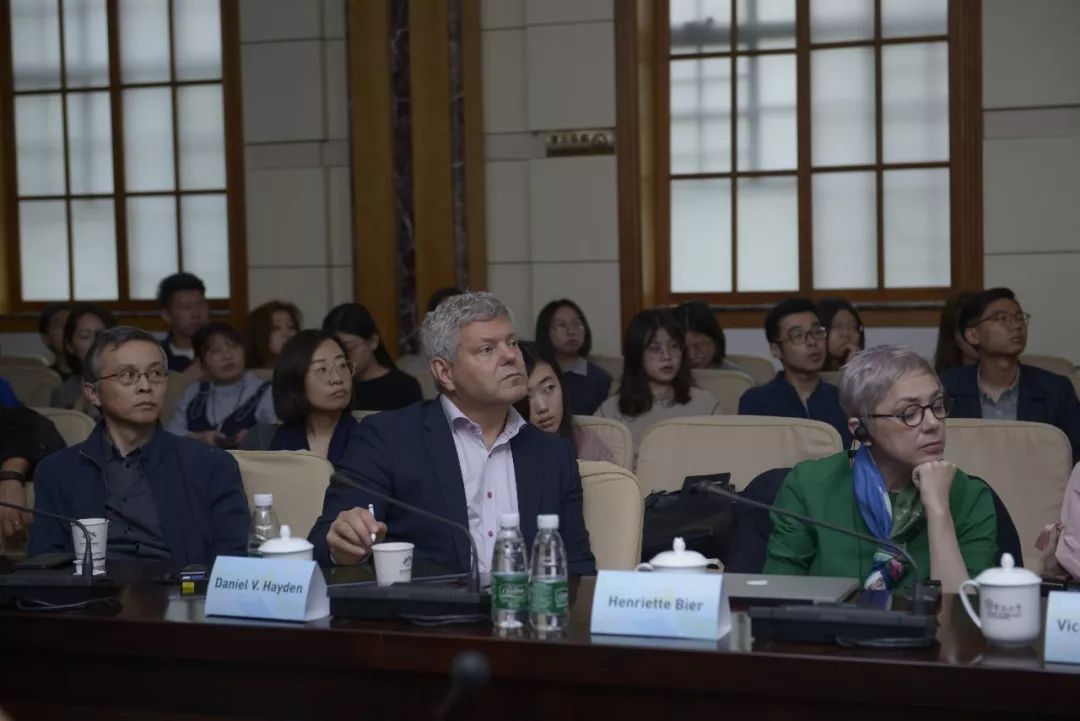
(论坛现场:(左起)院长韩冬青教授、
丹麦建筑师 Daniel V. Hayden、
荷兰代尔夫特理工大学教授 Henriette H. Bier)
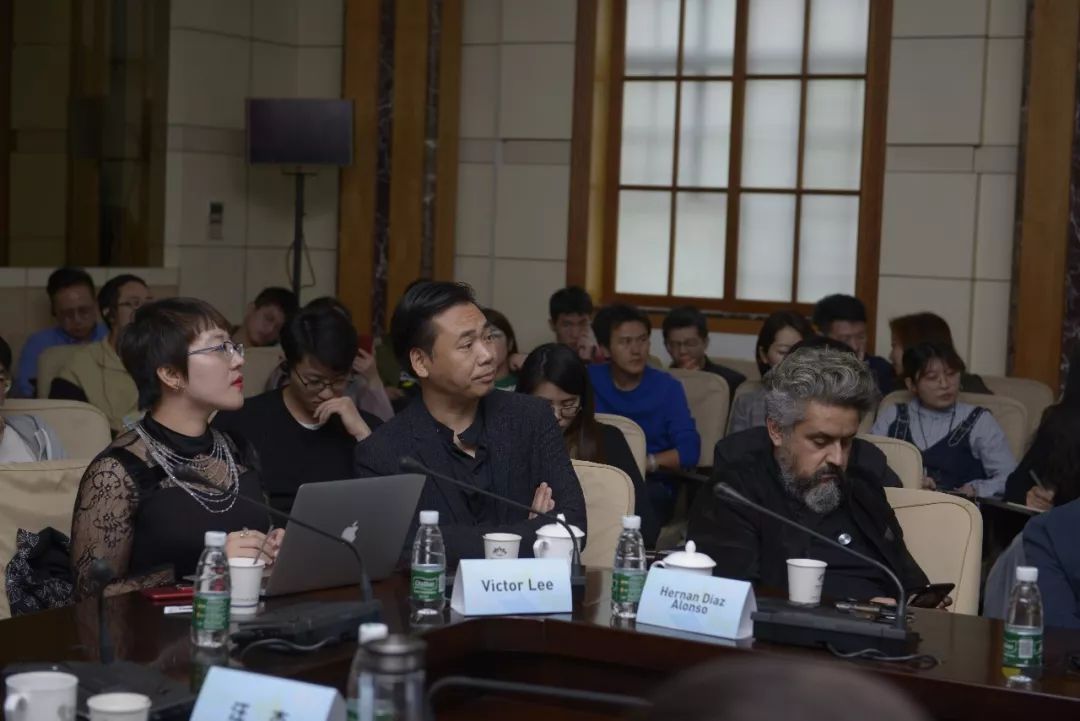
(论坛现场:(左起)
雅伦格文化艺术基金会理事长李家豪、
美国南加州建筑学院院长 Hernan Diaz Alonso)
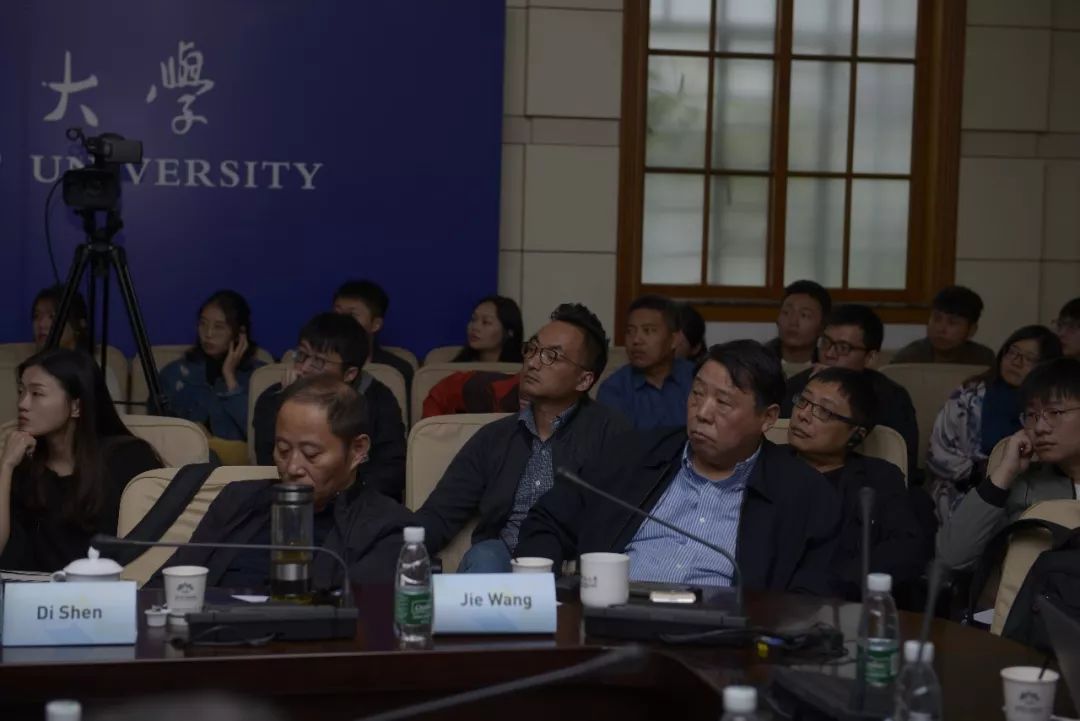
(论坛现场:(右起)南京长江都市建筑设计有限公司董事长汪杰)
![]()
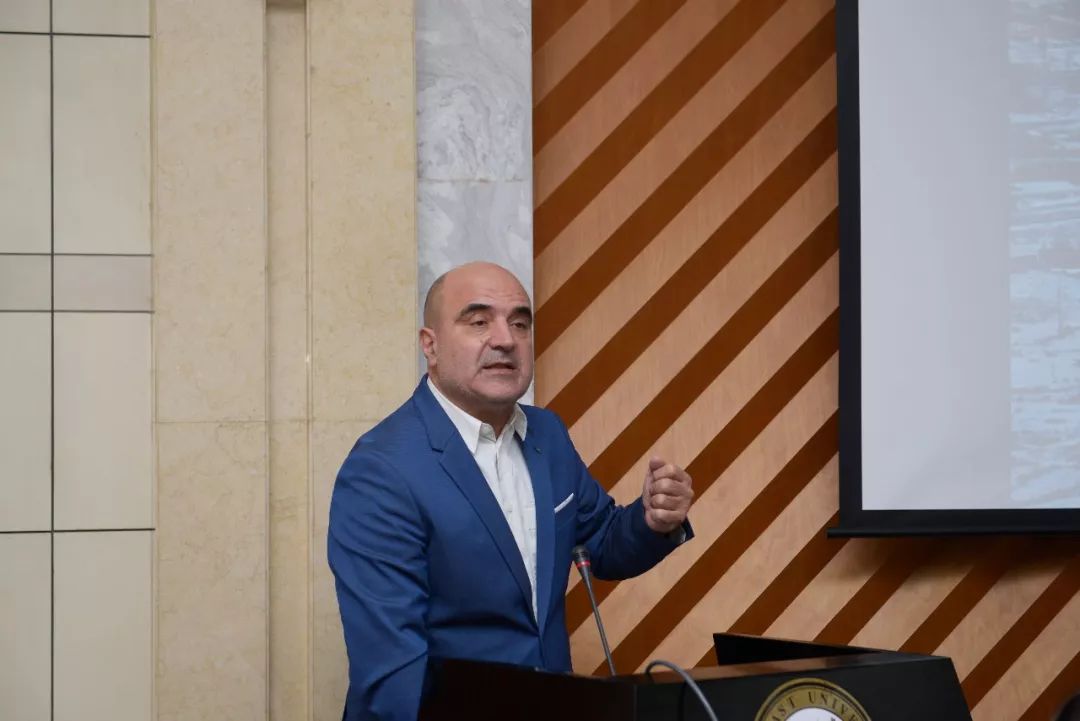
巴塞罗那前城市总建筑师、
巴塞罗那城市生活环境
(Urban Habitat)部门的首位负责人、
加泰罗尼亚高等建筑学院(IAAC)创始人
Vicente Guallart
巴塞罗那前城市总建筑师、巴塞罗那城市生活环境(Urban Habitat)部门的首位负责人、加泰罗尼亚高等建筑学院(IAAC)创始人 Vicente Guallart 带来的主题演讲为“先进生态建筑”。Vicente Guallart 一直致力于先进生态建筑研究与实践,其所主持的“媒体屋”(Media House)等项目与全球重要企业展开了产学研用一体化的合作,为“下一代建筑”在挖掘以科技创新与技术融合为驱动,促进环境、经济、社会和科技创新等全面发展,提供了有力的理论和产业支撑以及切实可循的实践案例。IAAC(西班牙加泰罗尼亚高等建筑学院)的教学实践让我们看到了建筑学教育从传统工坊模式到Studio模式再到Lab的模式进而进入Life模式的发展历程,印证了一种全新理念——“生活本身就是实验”。在这种以数据为支撑的体系下,未来建筑的可能性和城市发展的模式被充分探讨,同时也将视线还原到目前所面临的生态和环境能源等问题。城市不再只是物理的城市,而是整合信息互联网、能源与资源的互联网等,形成虚拟和现实结合的综合形态。
As the former chief architect of Barcelona Municipality, the first head of Urban Habitat, founder of Institute of Advanced Architecture of Catalonia (IAAC), Mr. Vicente Guallart delivered the speech of Advanced Ecological Building. Mr. Vicente Guallart has been committed to the research and practice of advanced ecological architecture.His projects such as Media House, have cooperated with important global companies and integrated with industry, academy and research and have been good case study for “The Next Architecture” program which aims to improve the development of environment, economy and society by innovation and technology integration.The teaching practice of IAAC shows us the development of architecture education from traditional Workshop mode to Studio mode, Lab mode and then into the life mode, which proves a new concept. - 'Life itself is an experiment.”Under this data-supported system, the possibilities of future buildings and the mode of urban development are fully explored, and sights are refocused to the current ecological and environmental energy issues. The city is no longer only a physical city, but an Internet that integrates information, energy and resources, forming a comprehensive form of combination of virtual and reality.
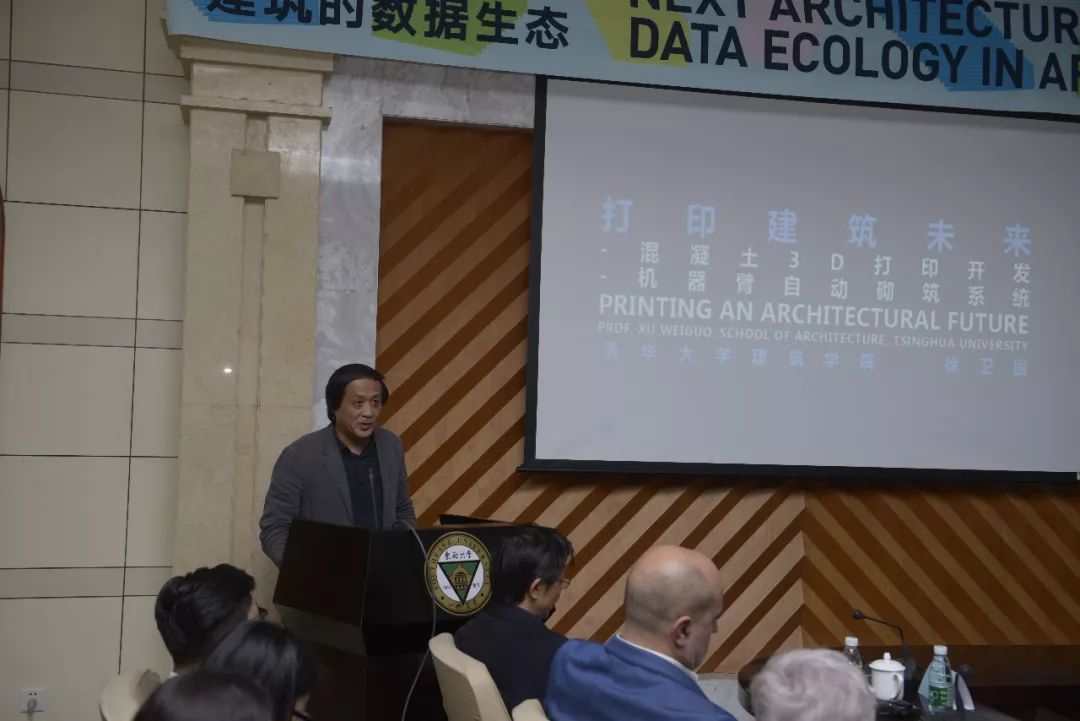
清华大学建筑学院建筑系主任
徐卫国教授
清华大学建筑学院建筑系主任徐卫国教授一直以来都是数字智能化建筑发展的领军人物,更是建筑3D打印智能建造的坚定实践者。他的报告深入阐述了新技术对建筑设计行业的影响,主要体现为四个方面:虚拟现实及增强现实将改变现有设计及建造方法,人工智能将与设计建造紧密结合,互动技术将创造新的建筑系统,3D打印将创造建筑未来。随后着重介绍了清华大学(建筑学院)-中南置地数字建筑研究中心3D混凝土打印建造研究成果。他说,“「智能建造」是指建筑的全过程及各专业充分利用数字技术实现建造目标;以此数字流为依据,建筑的物质性建造依靠互联网及物联网、CNC数控设备、3D打印、机器臂、AR&VR、人工智能等技术及机械,实现高精度、高效率、环保性的房屋建造与运营服务,这一新的’数字建筑产业链’正在形成之中”。
Professor Weiguo XU, Director of the Department of Architecture of Tsinghua University, has always been a leader in the development of digital intelligent architecture, and is a firm practitioner of architectural 3D printing in intelligence construction. His speech elaborates on the impact of new technologies on the architectural design industry, mainly in four areas: virtual reality and augmented reality will change existing design and construction methods, artificial intelligence will be closely integrated with design and construction, and interactive technology will create new building system, 3D printing will create the future of architecture. Afterwards, the research results of 3D concrete printing construction of Tsinghua University (Architectural Institute)-Zoina Land Digital Building Research Center were introduced. He said, 'Intelligent construction' refers to the whole process of construction and the professional use of digital technology to achieve construction goals. Based on this digital flow, the material construction of buildings depends on the Internet and Internet of Things, CNC equipment, 3D printing, Robotic Arm, AR&VR, artificial intelligence and other technologies and machinery to achieve high-precision, high-efficiency, environmentally friendly housing construction and operation services, this new 'digital construction industry chain' is forming.'

荷兰代尔夫特理工大学建筑与
环境建造学院机器人建造研究所
(Robotic Building Group)的发起人和领导人
Henriette H. Bier 教授
荷兰代尔夫特理工大学建筑与环境建造学院机器人建造研究所(Robotic Building Group)的发起人和领导人 Henriette H. Bier 教授进一步阐述了“机器人建造时代的建筑”。她通过介绍荷兰代尔夫特理工大学(TU Delft)和德国哈尔特应用科学大学德绍建筑学院(HS Anhalt)的博士和理学硕士的工作,展示机器人和信息物理系统在当代建筑行业应用的先进性。 其工作的特色是探索计算设计、机器人生产和建筑中的信息物理操作。 这种信息物理操作依赖于人机协作,并确保环境、人员和建筑物之间的互动。 因此,机器人建筑时代的挑战涉及构建这种人机协作,这是当代建筑师利用机械智能识别其优势并弥补其弱点的绝佳机会。
Dr. -Ing Henriette H. Bier, Associate Professor at TU Delft and leader of Robotic Building group, lectures at the Next Architecture Symposium on Architecture in the Age of Robotic Building. She challenges contemporary building industry to pick up on advancements in robotics and cyber-physical systems by introducing work implemented with PhD and MSc students at TU Delft and HS Anhalt. The work features exploration into computational design, robotic production, and cyber-physical operation in architecture. Such cyber-physical operation relies on human-robot collaboration and ensures interaction between environment, people, and buildings. Thus challenges in the age of robotic building, involve framing this human-robot collaboration, which is a great opportunity for contemporary architects to identify their strengths and compensate their weaknesses using mechanic intelligence.
![]()
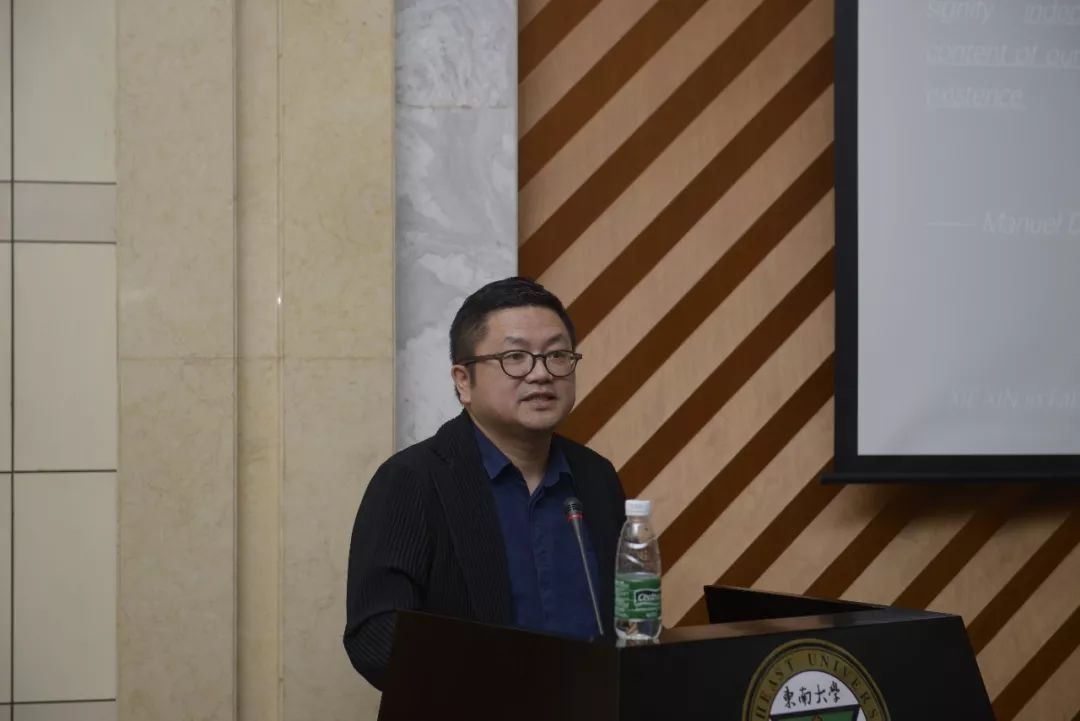
同济大学建筑城规学院教授
袁烽教授
同济大学建筑城规学院教授袁烽教授的“人机共造”从自身研究和实践出发,指出数字技术在建筑领域形成了一种高度集成的信息体系,使建筑师的思维能够与数字代码和工业机器人等工具无缝连接。这个体系通过消解建筑师作为设计主体的地位,对传统的建筑生产方式提出了巨大的挑战。然而,正如新唯物主义所暗示的,形式衍生的开放性仍依赖于人类思维的创造力。因此,计算机和机器人都应该被认为仅仅是人类的身体延伸,用以在建筑师与物质材料之间建构出全新的关系。
Philip F. YUAN, Professor of CAUP, Tongji University, lectures the concept of “Cyborg Fabrication' from his own research and practice. He points out that the development of digital technology cultivated an integrated data system that allows us to be seamlessly connected with tools like digital code and industrial robot. And this system has deeply challenged the traditional way of architectural production by decentralizing human as design subject. However, as New Materialism indicated, the openness of form generation is still essentially relying on the vital agency of human mind. Thus, both computer and robot should be only recognized as our body extension establishing a new relationship between architect and material.
![]()
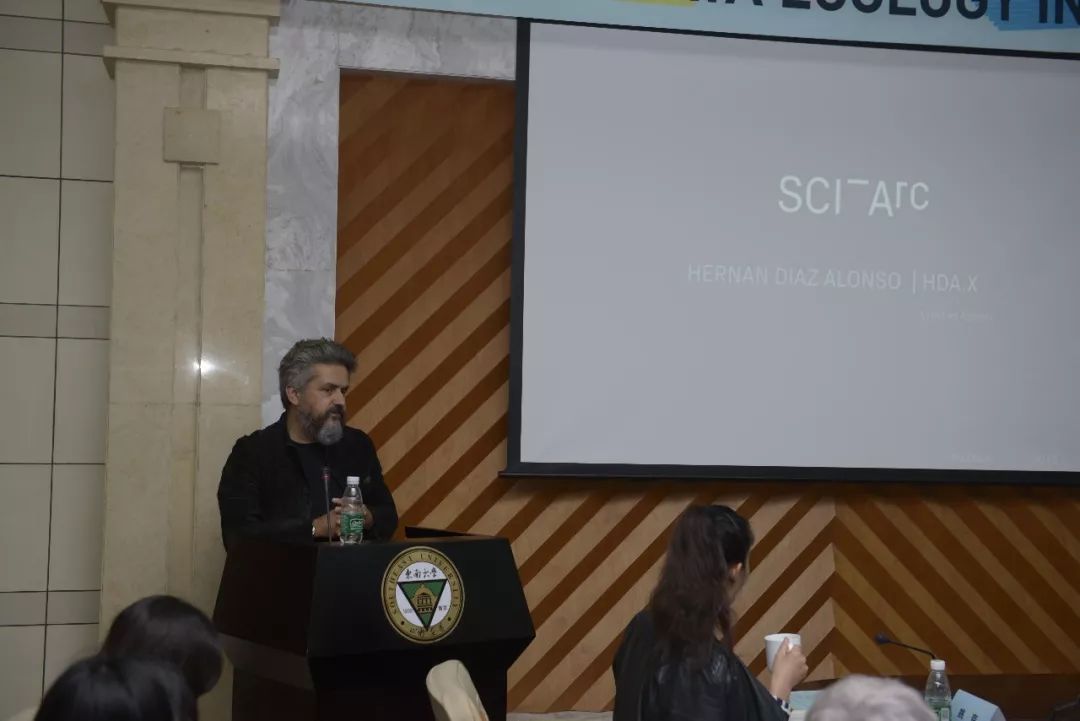
南加州建筑学院(SCI-Arc)院长
Hernan Diaz Alonso 教授
南加州建筑学院(SCI-Arc)院长 Hernan Diaz Alonso 教授,是该学院数字技术教学的领导者,他本人也在多学科实践设计、动画、交互式环境和革新的建筑探索等跨界领域广受赞誉。Alonso教授提出数字技术的发展将会给建筑语言、建筑师带来新的变革,计算工具也会催生出全新的几何构造。传统建筑将拥抱新的技术,计算机也会用更加理性的方式来强调美。Alonso教授通过一系列关于影像、拓扑形态、流行文化等案例提出传统元素可以成为自由形式的基础。同时,教授的一些跨界设计也从建筑艺术和自然结合的角度很大的扩展了建筑的力量,挑战了对建筑既有的认知,建筑代表设计的力量,而技术让我们传达这样的力量。
Hernan Diaz Alonso assumed the role of SCI-Arc director and widely credited with spearheading SCI-Arc’s transition to digital technologies.His multidisciplinary practice is praised for its work at the intersection of design, animation, interactive environments, and radical architectural explorations. He lectures that the development of digital technology would bring about new changes in architectural language and architects, and that computing tools would also give rise to new geometric structures. Traditional architecture will embrace new technologies, and computers will emphasize beauty in a more rational way. He suggests that traditional elements can be the basis of free form through a series of examples of images, topological shapes, and popular culture elements. At the same time, some of his cross-border design has greatly improved the power of architecture from the perspective of the combination of architectural art and nature, challenging the existing understanding of architecture. Architecture represents the power of design, and technology enables us to convey this power.
![]()
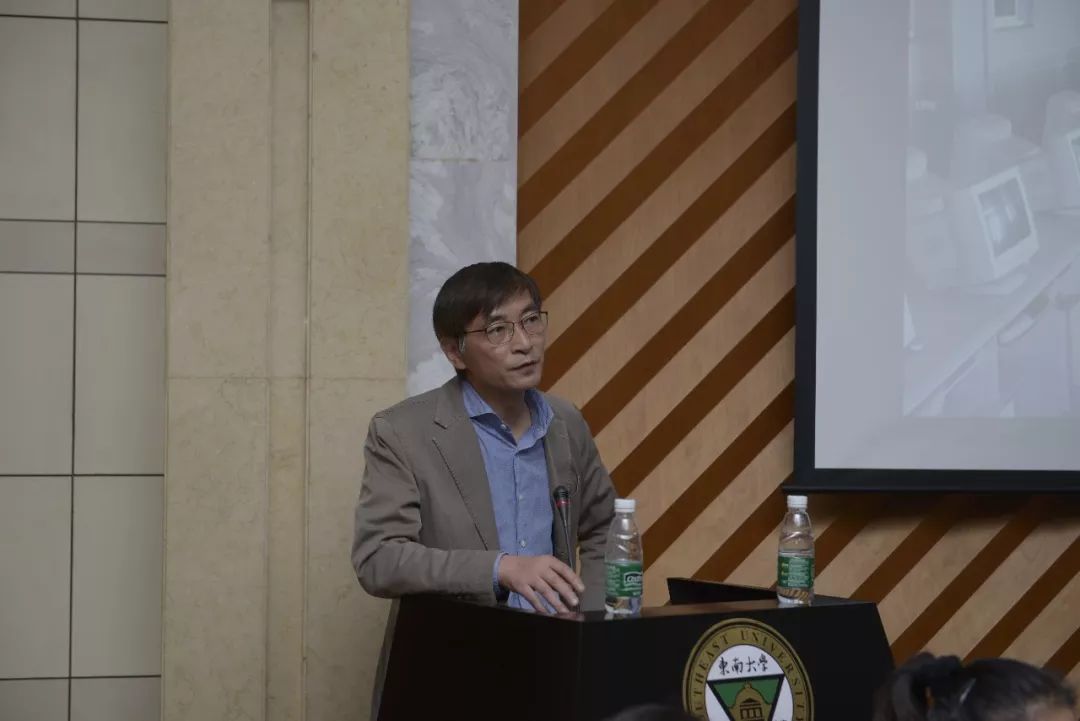
李飚教授
李飚教授的“算法模型解析设计黑箱”之主题演讲以2006年以来的建筑数字技术探索的众多案例为基础,针对数控建造和算法设计的程序化黑箱解析,阐述程序编码算法模型对学科问题转译过程的显性与隐性潜能,呼吁建筑数字方法应回归对学科本原的结构化技术策略思考。报告涉及算法模型包括基于数据可视化、数理模拟、模式识别、拓扑关联及多代理系统等算法模型的隐性转化编码模式,及其算法模型的建筑学方法的隐性转译机制。进而,探索基于大数据挖掘,突破人类思维定势的逻辑限制,在概率空间中塑造未来建筑新方法的可能。
Professor Biao LI, School of Architecture Southeast University, delivers a keynote speech on 'Using Algorithm models to analyze the ‘Black box’ of design '. Based on the numerous cases of architectural digital technology exploration in School of Architecture, Southeast University since 2006, his speech expounds the explicit and implicit potential of the program coding algorithm models in the translation process of subject problems, and calls on strategic thinking of structured technology strategy for the return of discipline origin. The speech involves algorithm models including implicit conversion coding mode based on algorithmic models such as data visualization, mathematical simulation, pattern recognition, topological correlation and multi-agent system, and the implicit translation mechanism of the algorithm models related to architectural methods. Furthermore, it explore the possibility of breaking the limits of human mindset based on big data mining and shaping the new methods of future architecture in the probability space.
![]()
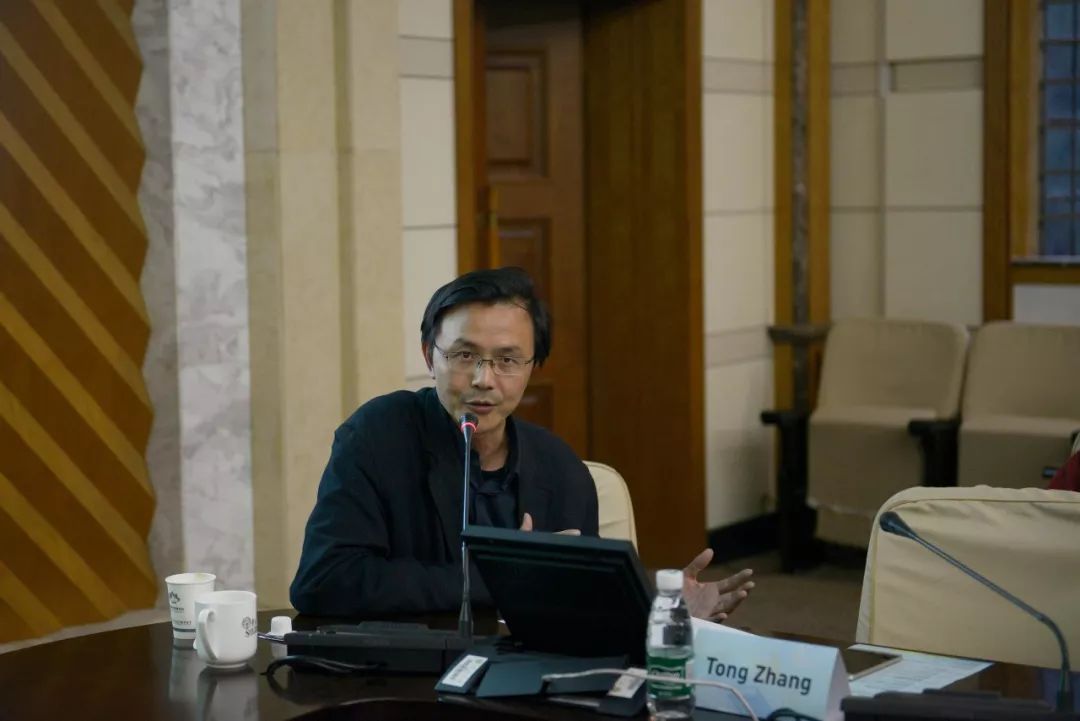
副院长张彤教授
作为“下一代建筑”系列论坛之“建筑的数据生态”的发起者之一,副院长张彤教授表示,我们的生活和身边的环境正在发生巨大变化。至少我们已经认识到空间和资源的总量是有限的,地球环境和气候正在因为包括建造在内的人类活动经历不可逆转的变化。大数据和云计算基础设施的疾速迭代和完善,使得以人工智能和物联网为代表的信息技术迅速改变着我们的生活、思维和社会的运行模式。我们会同时面对身处环境的生态危机,以及来自数据与算法进化的另一种“智慧体”的挑战。在这样的背景下,作为塑造环境、承载生活的最大量基础设施,房屋建筑会发生什么样的改变?当构建房屋的不再是砖石,而是数据;当建筑既是数据的入口,又是数据沉淀和分享的平台;当数据在人、建筑和应用之间循环累进……建筑学是否会被诠释成为一种数据生态?当房屋具备了“生命体”机制,自身不断学习和持续进化,我们是否做好准备要接受它的思考,行动和感情?我们是否可以想象建筑从自发无序的无机体脱离,进化成为自然生态系统的组成部分?由此,建筑超越与自然的二元对立,参与自然界物质和能量的流动,并协同其他系统构成可持续发展的生态共同体……
As one of the initiators of “The Next Architecture Symposium: Data Ecology in Architecture”, Professor and Deputy Dean of School of Architecture, Southeast University, Mr. Tong ZHANG expresses that our life and the environment are undergoing tremendous changes. At least we have recognized that the total amount of space and resources is limited, and the environment and climate of earth are undergoing irreversible changes because of human activities, including construction. The rapid iteration and improvement of big data and cloud computing infrastructure has enabled information technology represented by artificial intelligence and the Internet of Things to rapidly change the way we live, think and operate. We will face both the ecological crisis in the environment and the challenge of another “wisdom” from the evolution of data and algorithms.In this context, what changes will happen to building construction as the largest infrastructure to shape the environment and accommodate life? When building a house is no longer a masonry, but data; when building is both an entry point for data and a platform for data storage and sharing; when data is cyclical between people, buildings, and applications... architecture will be interpreted as a data ecosystem? When a house has a 'living body' mechanism, and it continues to learn and evolve continuously, are we ready to accept its thoughts, actions, and feelings?Can we imagine that buildings have detached from spontaneous and disordered inorganic bodies and evolved into an integral part of the natural ecosystem? Thus, the building transcends the binary opposition of nature, participates in the flow of substance and energy in nature, and cooperates with other systems to form a sustainable ecological community.
![]()
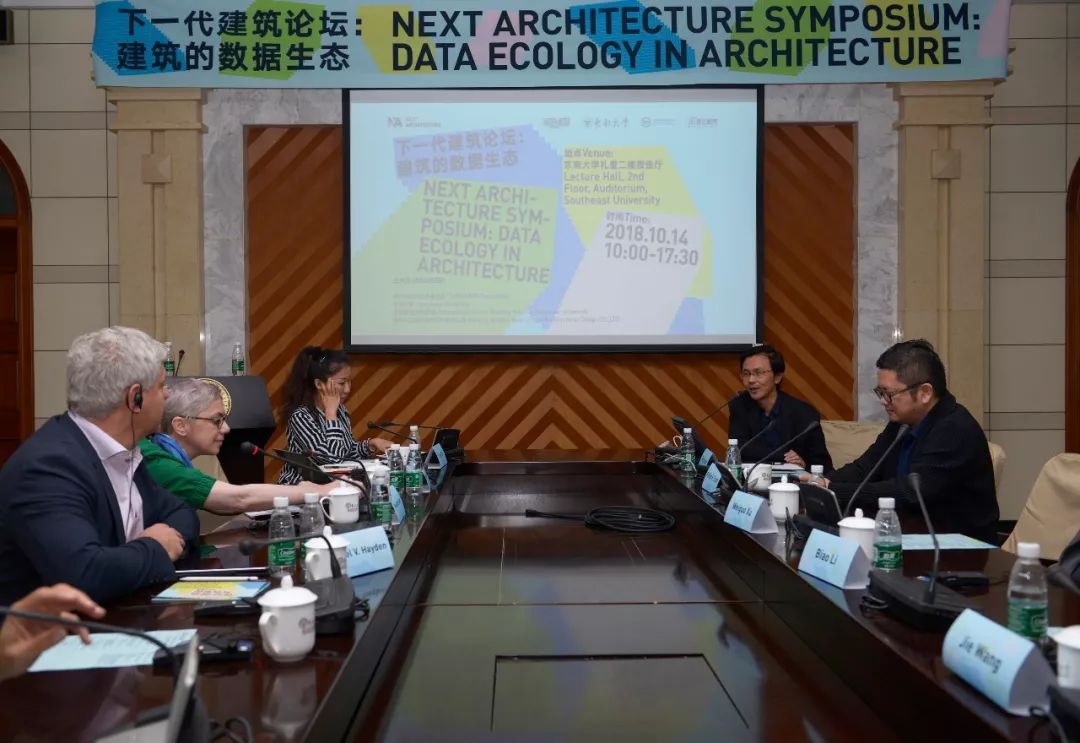
这些问题在之后的圆桌讨论环节继续延展,通过应对挑战、分享经验、提出解决方案而不断交互思想、建立共识。
张彤教授提出议题:在数字化新浪潮下,传统的建筑学的核心是否面临改变,或是重新被定义和塑造?
丹麦建筑事务所 Dissing+Weitling 建筑总监 Daniel V. Hayden 认为建筑师首先应该拥有自己的信仰体系,他不只是空间打造者,更是体验缔造者。计算机算法是帮助建筑师在建筑中阐述思想的工具。
徐卫国教授认为建筑师要利用数字科技解决人口结构变化等因素带来的建造施工方面的挑战,使得建筑行业得以可持续地发展。
袁烽教授提出新的技术提供了重构建筑学科的一种方式。机器不能代替人类的思想和创造力,人体与机器之间应当协作、共生。
Henriette Bier教授希望将更多的注意力放在利用信息物理和机器人技术潜力的新设计上。 她认为,这些技术并没有完全融入当前的学术和工业环境,且技术发展在建筑学科内仍然相对缓慢。
Hernan Diaz Alonso建议通过多面的跨界的方式来更好的利用专业知识。
李飚教授表示计算机或是机器人是为建筑师所用的工具,同时我们也要尊重技术的强大力量,软件的智能性会带来智能的建筑。
雅伦格文化艺术基金会理事会理事长李家豪先生最后表达了增强国际间交流,互通有无,共享信息以促进学科发展的愿望。
These issues continue to be extended in the subsequent panel discussion, and panelists continue to interact and build consensus by responding to challenges, sharing experiences, and proposing solutions.
Prof. Tong ZHANG raised the issue: Under the new digital wave, is the core of traditional architecture facing changes, or is it being redefined and shaped? Daniel V. Hayden, architecture affair director of Dissing+Weitling, believes that architects should first have their own belief system. A architect is not only a space creator, but also an experience creator. Computer algorithms are tools that help architects articulate ideas in architecture. Prof. Weiguo XU believes that architects must use digital technology to solve the construction challenges brought about by factors such as demographic changes, so that the construction industry can develop sustainably. Prof. Philip F. YUAN proposes that new technologies provide a new way to reconstruct the architectural discipline. Machines cannot replace human thought and creativity. The human body and the machine should cooperate and develop a symbiotic relationship.Dr. -Ing Henriette Bier hopes that more attention will be placed on new designs exploiting the potential of cyber-physical and robotic technologies. She believes that these technologies are not fully embraced in the current academic and industrial environment, and the technical development within the architectural discipline is still relatively slow. Hernan Diaz Alonso proposes that we should embrace our expertise in being generalists. Prof. Biao LI said that computers or robots are tools used by architects. At the same time, we must respect the power of technology. The intelligence of software will bring intelligent buildings. Victor LEE,Board Director of EMGdotART Foundation, expresses his desire to enhance international exchanges, exchange information, and share information to promote the development of the architecture industry.
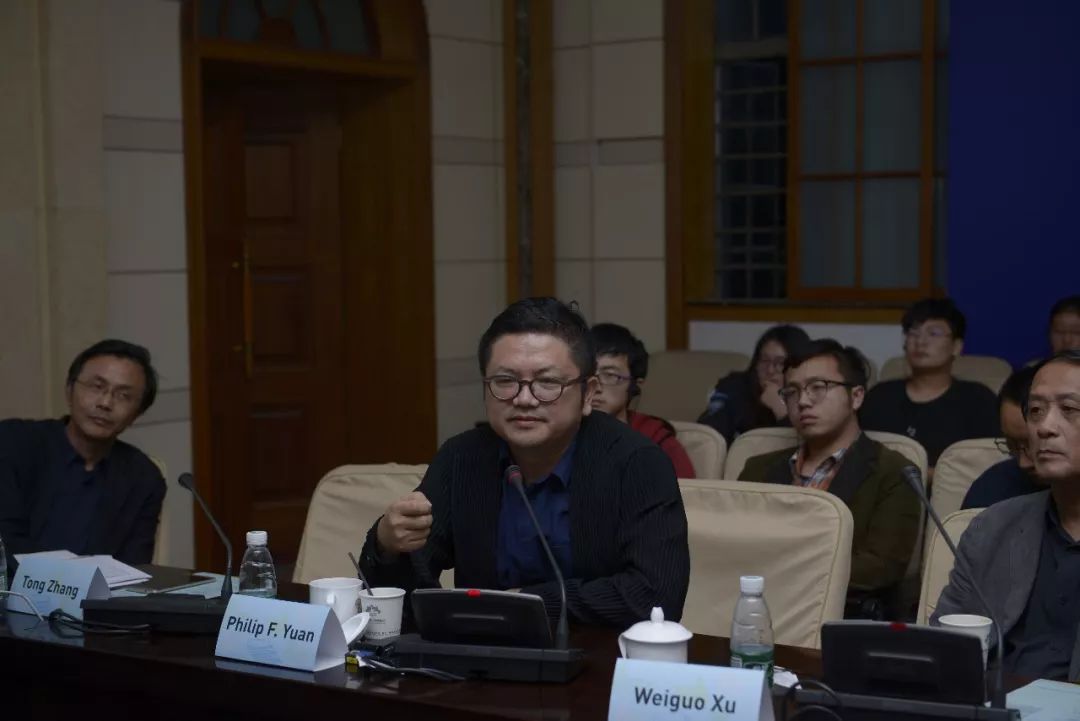
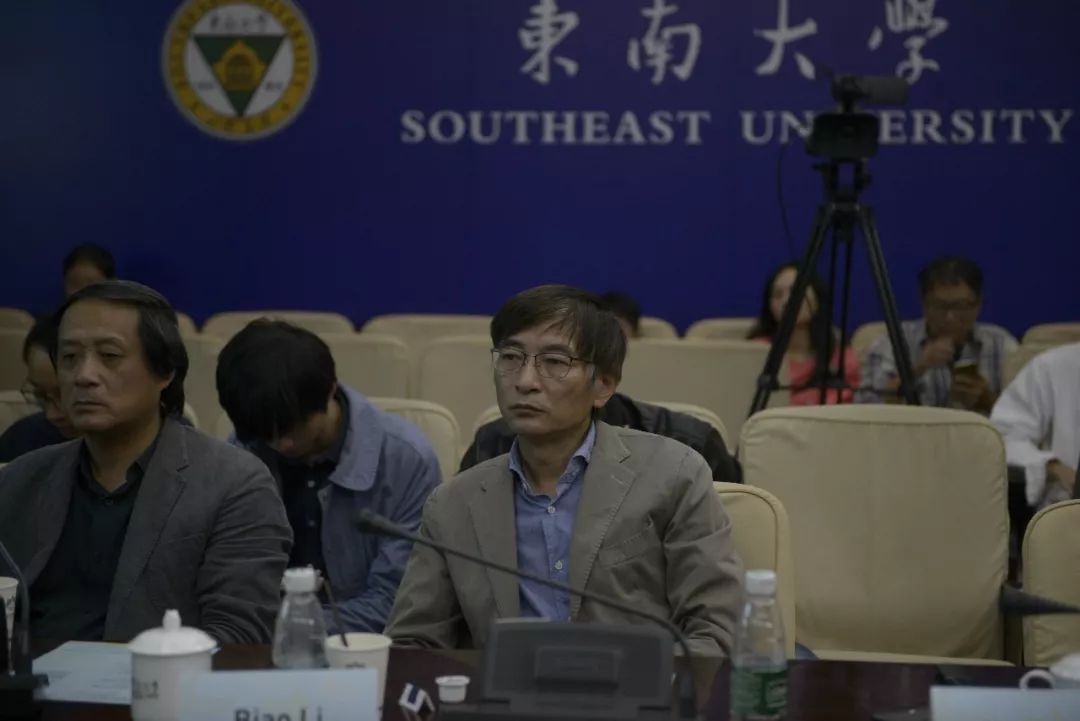
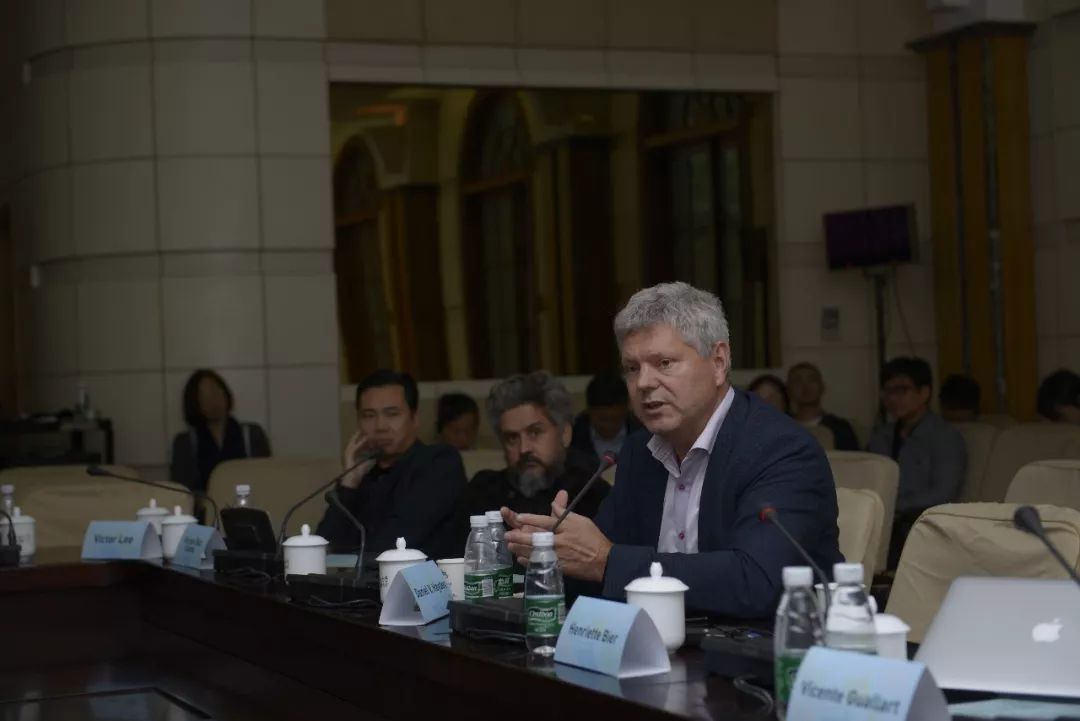
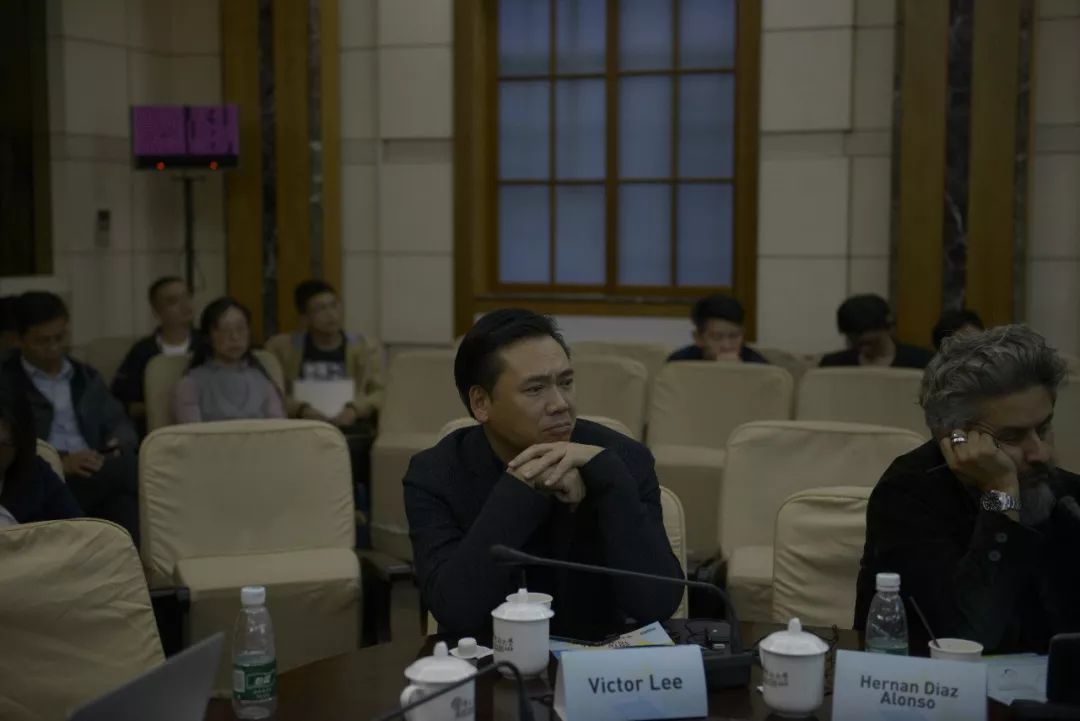
![]()
「下一代建筑」系列论坛的另一发起方——雅伦格文化艺术基金会(Fondazione EMGdotART),联合DADA(中国建筑学会数字设计专业委员会)、IAAC(西班牙加泰罗尼亚高等建筑研究院)、城市复兴2050(UR2050)等共同发起「下一代建筑」发展计划,并将「下一代建筑」系列论坛作为重要组成部分,同时创立了以全球智慧连接与共享为基础的“下一代建筑”全球创新大赛平台,聚焦那些应对能源和环境等压力,通过加载新的技术并利用大数据而不断增强解决问题能力,创造丰富的公共性、流动互联的物联网生活,从资源角度实现环境平衡和低生态足迹,以及开拓先锋可行的智能建造技术等前沿理念、科研、技术、系统化解决方案和示范性项目。「下一代建筑」发展计划相信,建筑的数据生态亦可被诠释为建筑将会变成服务与信息网络的个性化终端,就像手机是网络信息的智能终端一样,建筑亦将是我们生活中网络智能化的终端。不仅如此,以建筑内的人、设备、环境等感知信息作为数据源泉,以物联网技术为支撑实现万物互联,将数据汇聚到一个开放平台,可以开放给创新、创业者进一步开发使用。该生态系统永远在线,以标准服务接口的方式提供给中人工智能、虚拟现实服务、支持创新人员以群体智慧的方式开展社会化协同创新,围绕建筑产生可自我进化的多样性应用服务,不断改善用户体验、丰富生活方式和增强生活品质和创造力。
'The Next Architecture” Symposium is a part of “The Next Architecture” Program which is initiated by EMGdotART Foundation and co-founded by DADA(Digital Architecture Design Association of The Architectural Society of China), IAAC ( The institute for Advanced Architecture of Catalonia, Spain) and Urban Regeneration 2050.At the same time, “The Next Architecture” Global Innovation Competition platform based on the concept of global wisdom connection and sharing, focusing on energy and environment solutions by loading new technologies and using big data to create rich Public accessibility, connectivity and Internet of Things, environmental balance and low ecological footprint from a resource perspective, as well as cutting-edge concepts, research, technology, systematic solutions and demonstration projects that pioneer the viable intelligent construction technology.'The Next Architecture” Program believes that the Data Ecology in Architecture can also be interpreted as a personalized terminal that will become a service and information network. Just as mobile phones are smart terminals for network information, architecture will also be the intelligent terminal of our life network. Besides, Data perception from people, equipment, and environment in the building could be the data source and the Internet of Things technology could support the realization of the Internet of Everything, the convergence of data to an open platform, can be open to innovation and entrepreneurs for further development and use.
This Data Ecosystem is always online, providing artificial intelligence service, virtual reality services, supporting innovative people to carry out socialized collaborative innovation in a group-wise way, and generating self-evolving and diverse application services around buildings, continually improving user experience, diversifying lifestyle and enhancing quality of life and creativity.
联动“下一代建筑”全球创新大赛平台,对“建筑数据生态”的探索,亦同时聚焦于由国际绿色建筑联盟、东南大学、南京国际健康城开发建设有限公司、南京长江都市建筑设计有限公司、中建八局第三建设有限公司、雅伦格文化艺术基金会联合主办的“智慧树:垂直社区的未来生活”国际竞赛。这一竞赛以南京江北新区国际健康城人才公寓从地面开始到35.1米的建筑体量为竞赛标的,旨在重点挖掘:亚洲城市高密度生活的垂直生态系统;高层建筑的能源效率解决方案(如可再生能源、分布式能源系统以及单元模块能源使用的集成效率等);如何以数据驱动设计,形成建筑的智慧大脑;如何结合人工智能与物联网技术,对人工智能时代的居住、娱乐、研发、交流等空间模式和技术应用场景进行探索与回应;以及智能建造技术等。竞赛所探索的主要方向正是建筑的数据生态,即由信息技术和环境技术所带来的建筑不同于以往的改变,如何在设计和技术的融合中使之发展为一个生命体系,并且做到人工所建造的系统与自然界的原生系统天然吻合,而不是二元对立,真正成为人和自然能够共融共生的智慧生态系统。从更大范畴来说,如果每一单体建筑都可以具有生命体的机制,那么我们的社区和城市亦将会成为一个具有智慧和生命机制的智慧系统。
As one of exploration of Data Ecology in Architecture, Smart Tree Competition: Future Life in a Vertical Community, launched at “The Next Architecture” Global Innovation Competition platform, is co-organized by International Green Building Alliance,Southeast University,Nanjing Yangtze River Urban Architectural Design Co., Ltd. ,The Third Construction Co.,Ltd. of China Construction Eighth Engineering Bureau,Nanjing International Healthcare Area Development & Construction Co., Ltd. and EMGdotART Foundation.The competition focuses on Building No. 3 of the International Healthcare Area Talent Apartment in Jiangbei New Area, Nanjing. A 35.1-meter-high section above the ground floor of the apartment will be utilized as the competition scope.This competition aims to explore and response to ongoing phenomena and life expectancy in densely populated cities in Asia; Energy efficiency solutions for high-rise buildings (such as renewable energy, distributed energy systems, and integrated efficiency of unit module energy use); how to use data-driven design to form the intelligent brain of architecture; how to combine artificial intelligence and Internet of Things technology to explore and respond to spatial patterns and technical application scenarios such as residential, entertainment, research and development, and communication in the era of artificial intelligence; Intelligent construction technology, etc. The main direction of the competition is the Data Ecology in Architecture. The Next Architecture promoted by information technology and environmental technology is different from the previous ones. How to develop the architecture into a life system integrated of design and technology and a artificially constructed system naturally conforms to the natural system of nature, rather than binary opposition, and truly becomes a smart ecosystem in which humans and nature can blend together. On a larger scale, if every single building can have a living body mechanism, then our community and city will also become a smart system with wisdom and life mechanism.
未来充满呼唤和感召!“「下一代建筑」系列论坛之——建筑的数据生态”无疑开辟了在更长的时间尺度上引领建筑审视自身、突破传统、勇于创新,拥抱由大数据和科技发展所带来的深度变革,以新的方式、生态和能力走向未来的探索与发展之路。
The future is full of calling and inspiration! “The Next Architecture Symposium– The Data Ecology in Architecture” undoubtedly leaded a trend of self evolving , break through the tradition, be innovative, and embrace the profound changes brought about by big data and technological development on a longer time scale and create a new exploration and development way to future architecture.
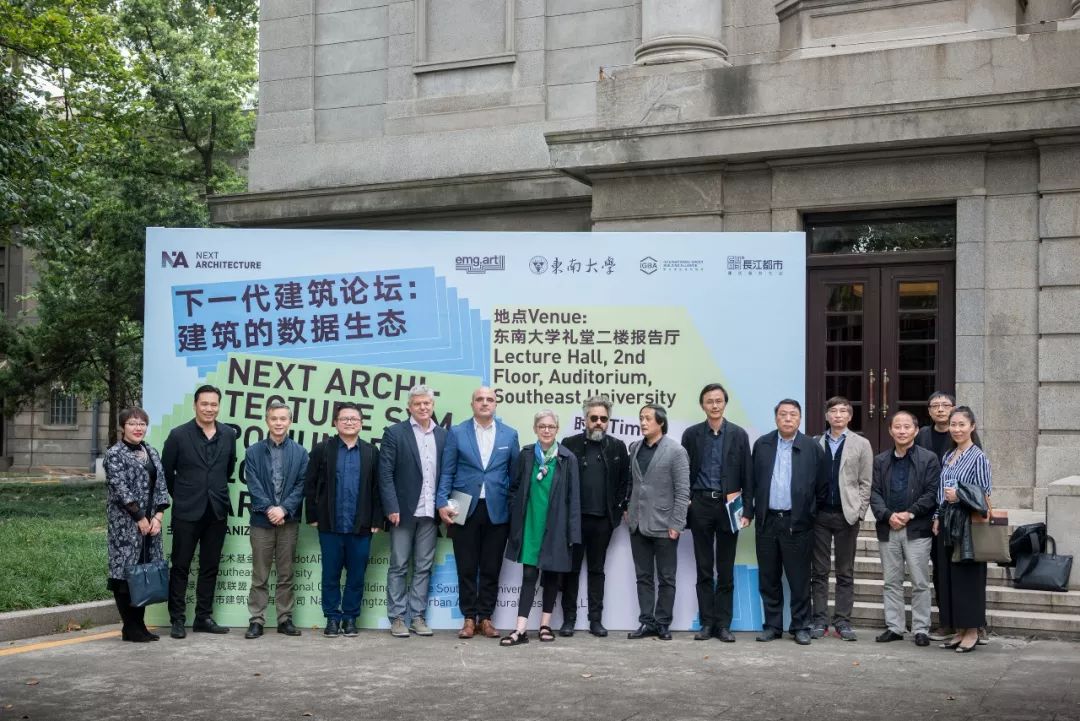
撰文:雅伦格文化艺术基金会、季云竹
整理、记录:蔡陈翼、徐怡然、孙正


